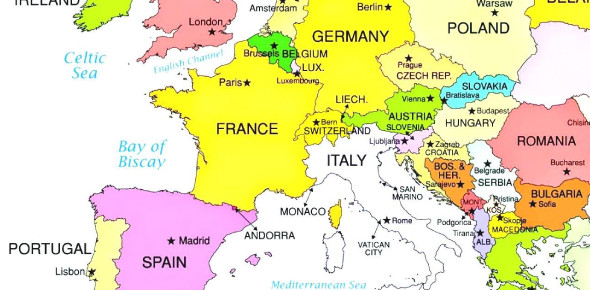The Enigmatic Flag of Andorra: Unraveling its Symbolism and Significance
Introduction to the Flag of Andorra
The national flag of Andorra features three vertical stripes of blue, yellow, and red, with the country's coat of arms in the center. It is a tricolor flag that is widely recognized as a symbol of Andorran sovereignty and unity.
Historical Background and Evolution
The origins of the Andorran flag date back to medieval times when the land was under the influence of various rulers. Over the centuries, the flag underwent several changes until it was officially adopted in its current form in 1866. Understanding the historical context helps appreciate the flag's significance in modern-day Andorra.
Design and Symbolism
Colors and their meanings
- Blue symbolizes the sky, freedom, and peace.
- Yellow represents the sun, prosperity, and harmony.
- Red signifies courage, valor, and the blood shed for independence.
Coat of arms significance
The coat of arms at the flag's center includes elements like a mitre, a shield with three pales, and a motto. These symbols reflect Andorra's religious, historical, and cultural heritage, adding depth to the flag's symbolism.
Usage and Protocol
The Andorran flag is used in various official and ceremonial capacities. Understanding the proper handling, display, and etiquette surrounding the flag is essential to show respect and honor for national symbols.
Official and ceremonial uses
The flag is prominently displayed during national holidays, official events, and diplomatic functions. It also adorns government buildings, schools, and public spaces as a symbol of national pride.
Proper handling and display
There are specific protocols for raising, lowering, and folding the flag, ensuring it is treated with dignity and reverence. Learning these guidelines helps maintain the flag's integrity and symbolism.
Flag Variants and Modifications
Over time, there have been discussions and proposals for modifying the Andorran flag or creating variants for specific purposes. Exploring these variations sheds light on the flag's adaptability and relevance in different contexts.
Importance of the Flag in Andorran Culture
The flag holds immense cultural significance in Andorra, symbolizing unity, independence, and identity. It is deeply ingrained in the collective consciousness of the Andorran people, influencing traditions, celebrations, and societal norms.
Flag Day Celebration
Andorra celebrates Flag Day on July 8th, commemorating the adoption of the national flag. The day is marked with festivities, parades, and cultural events that showcase the flag's importance in national heritage.
Flag-related Traditions and Customs
Various traditions and customs are associated with the Andorran flag, including flag-raising ceremonies, patriotic songs, and historical reenactments. These practices strengthen the bond between the flag and the Andorran people.
Comparisons with Other National Flags
Comparing the Andorran flag with flags of other nations provides insights into design elements, symbolism, and cultural influences. It highlights the uniqueness of the Andorran flag while acknowledging common themes in flag symbolism.
Controversies and Debates
Like many national symbols, the Andorran flag has been a subject of debates and controversies. Understanding differing perspectives and historical contexts helps appreciate the complexity of flag-related discussions.
Conclusion
The Flag of Andorra is more than a colorful banner; it is a representation of the country's history, values, and aspirations. Its design, symbolism, and usage reflect the essence of Andorran identity and culture, making it a cherished emblem for generations to come.
FAQs About the Flag of Andorra
- What do the colors of the Andorran flag symbolize?
- How often is the Andorran flag raised on national holidays?
- Are there any regulations regarding the size of the flag when displayed publicly?
- Has the design of the Andorran flag changed significantly since its adoption?
- Are there any specific traditions associated with the folding of the Andorran flag?

Comments
Post a Comment